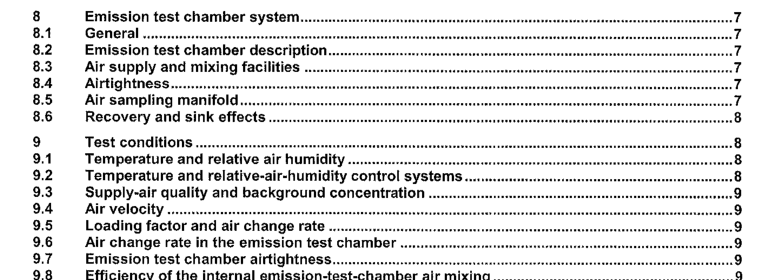EN 10580:2010 – Resilient, textile . and laminate floor coverings – Test method for vo latile . organic compound (V0C) emissions

Discard the outer layer of the roll to take the sample. The sample shall have an area correspondling to at least 50 cm in the production direction over the width of the produced roll. After taking the sample, it is rlle immediately at right angles to the direction of the production roll, secured with staples or a non-emitting fastening, wrapped in aluminium foil, and placed in an unprinted, airtight polyethylene bag and sealed.
Each bag shall contain only one sample. The packed samples shall be sent to the testing laboratory with the shortest possible delay.
6.1.2 Selection of samples of rigid products such as tiles and planks Select an unopened and undamaged standard package of the product. Alternatively, remove four or more pieces from the centre of a product package leaving the outer pieces. Stack a minimum of four pieces and tightly wrap the stack in two layers of aluminium foil and treat as described for rolls in 6.1.1.
6.2 Sample packaging and transport Samples shall be thoroughly protected from chemical contamination, such as fuel vapours or any physical exposure, e.g. heat, light and humidity during transportation and storage prior to testing. This can be achieved by wrapping each sample or package of samples in aluminium foil and in a sealed polyethylene bag or, alternatively, in aluminized packaging lined with polyethylene or clear polyvinyl fluoride film. Each bag shall contain only one sample.
NOTE The transportation of collected samples can affect the emission characteritics of the product.
The possible effects of temperature and humidity are of particular concermn.
6.3 Sample description The outer packaging of the sample shall be labelld with the detals of the type of product, date or week of manufacture (if known) and/or any identification numbers, e.g. batch numbers (see also ISO 16000-9).
6.4 Storage of the sample prior to starting the testing In many cases, it can be necessary to store the sample in the laboratory before starting the test. The sample shall be kept in its package, see 6.2, and stored at normal indoor conditions during any period of storage. Storage may affect the emission properties due to aging of the sample. It is recommended to minimize the storage time of the sample prior to preparation of the test specimen.
7 Preparation of test specimens The period of time between the unpacking and preparation of the test specimen shall be as short as possible and shall be recorded. After preparation of the test specimen, it shall immediately be put in the emission test chamber. This time shall be regarded as the starting time of the emission test, i.e. 1= to. For resilient, textile and laminate floor coverings, there is no extra conditioning time as the installed product is immediately accessible to the consumer.
7.1 Specimens from rolls Unpack the sample and select an appropriate area of the product from the middle, if possible, at least 50 cm from the edge of the short side, and take a test specimen. Cut the specimen from the square, leaving, if possible, at least 5 cm from the edge on each side. The underside of the test specimen shall be placed on an inert stainless-steel plate in order to determine exclusively the emission of the upper surface. Seal the edges with a non-emitting/non-absorbing aluminium foil (to be checked before use) or stainless- steel frame.
EN 10580:2010 – Resilient, textile . and laminate floor coverings – Test method for vo latile . organic compound (V0C) emissions